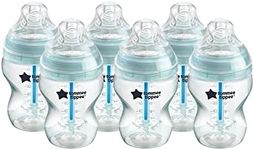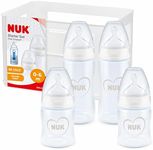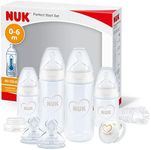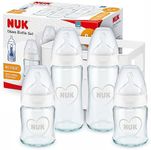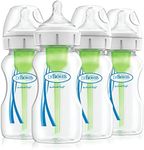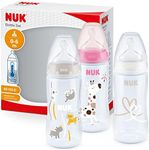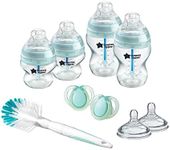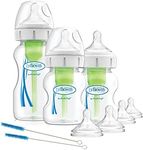Buying Guide for the Best Anti Colic Baby Bottles
Choosing the right anti-colic baby bottle can make a significant difference in your baby's feeding experience. Anti-colic bottles are designed to reduce the amount of air your baby swallows during feeding, which can help minimize discomfort and gas. When selecting a bottle, consider your baby's specific needs, your feeding routine, and how easy the bottle is to clean and assemble. Understanding the key features of anti-colic bottles will help you make an informed decision that best suits your baby and your lifestyle.Vent SystemThe vent system in an anti-colic bottle is crucial as it helps to reduce the amount of air your baby ingests while feeding. This system can come in various forms, such as a vented nipple, a straw-like tube, or a valve at the base of the bottle. When choosing a vent system, consider how easy it is to clean and assemble, as some systems can be more complex than others. If your baby is particularly prone to colic, you might want to opt for a bottle with a more advanced venting system to ensure maximum air reduction.
Nipple Shape and FlowThe nipple shape and flow rate are important because they affect how your baby latches onto the bottle and how much milk they receive at once. Nipples come in different shapes, such as wide or narrow, and flow rates, from slow to fast. For newborns or breastfed babies, a slow flow nipple that mimics the breast may be ideal. As your baby grows, you can transition to a faster flow. Consider your baby's age, feeding habits, and any preferences they may have shown when selecting the nipple shape and flow.
MaterialAnti-colic bottles are typically made from plastic, glass, or silicone. Each material has its benefits and drawbacks. Plastic bottles are lightweight and durable but may absorb odors over time. Glass bottles are free from chemicals and easy to clean but can be heavy and breakable. Silicone bottles are flexible and safe but may be more expensive. Consider your lifestyle and how you plan to use the bottles when choosing the material. For instance, if you travel frequently, a lightweight plastic bottle might be more convenient.
Ease of CleaningEase of cleaning is an important factor because baby bottles need to be thoroughly cleaned after each use to ensure your baby's health and safety. Bottles with fewer parts are generally easier to clean, while those with complex vent systems may require more effort. Look for bottles that are dishwasher safe or come with a cleaning brush. If you have a busy schedule, you might prefer a bottle that is quick and easy to clean to save time.
Size and CapacityThe size and capacity of the bottle determine how much milk it can hold, which is important as your baby grows and their feeding needs change. Bottles typically range from 4 ounces for newborns to 9 ounces or more for older babies. Consider your baby's age and how much they typically drink in one feeding when choosing the size. Having a variety of sizes can be useful as it allows you to adjust to your baby's changing appetite.

